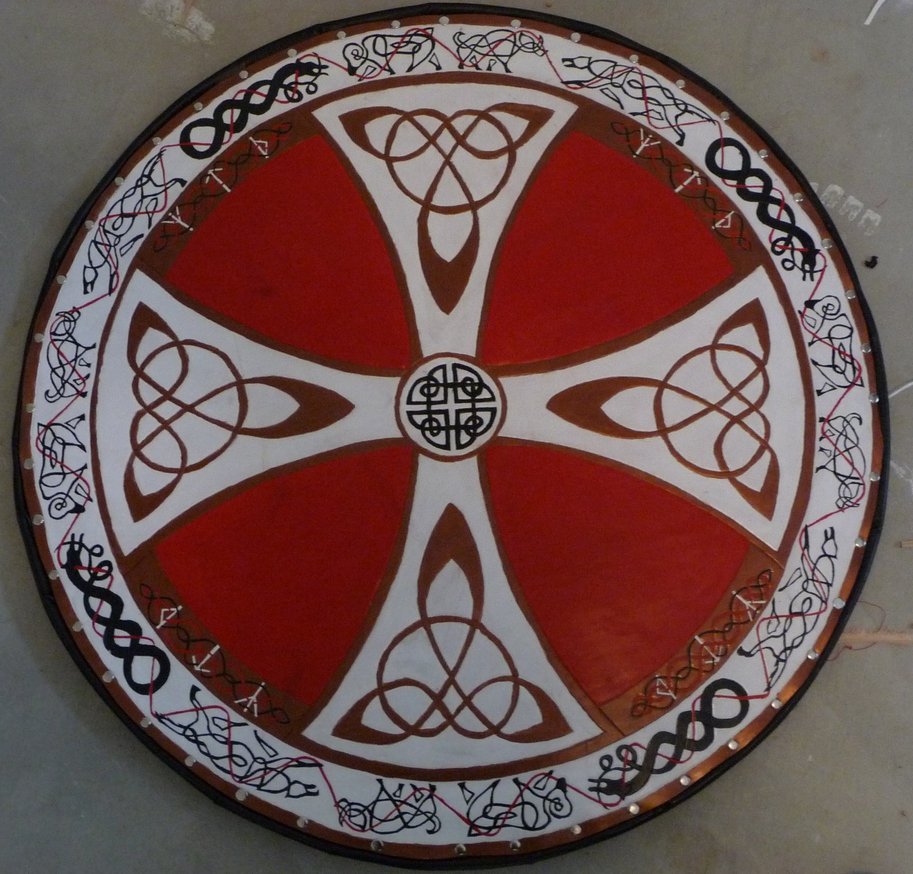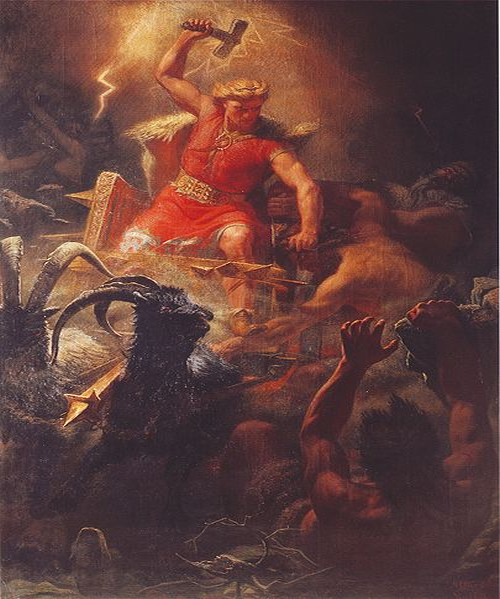Sources
Most of the existing records on Norse mythology date from the 11th to 18th century, having gone through more than two centuries of oral preservation in what was at least officially a Pagan society. At this point scholars started recording it, particularly in the Eddas and the Heimskringla by Snorri Sturluson, who believed that pre-Christian deities trace real historical people. There is also the Danish Gesta Danorum by Saxo Grammaticus, where the Norse gods are more strongly Euhemerized. The Prose or Younger Edda was written in the early 13th century by Snorri Sturluson, who was a leading skáld, chieftain, and diplomat in Iceland. It may be thought of primarily as a handbook for aspiring skálds. It contains prose explications of traditional "kennings," or compressed metaphors found in poetry. These prose retellings make the various tales of the Norse gods systematic and coherent.
The Poetic Edda (also known as the Elder Edda) was committed to writing about 50 years after the Prose Edda. It contains 29 long poems, of which 11 deal with the Germanic deities, the rest with legendary heroes like Sigurd the Volsung (the Siegfried of the German version Nibelungenlied). Although scholars think it was transcribed later than the other Edda, the language and poetic forms involved in the tales appear to have been composed centuries earlier than their transcription.
Besides these sources, there are surviving legends in Norse folklore. Some of these can be correlated with legends appearing in other Germanic literature e.g. the tale related in the Anglo-Saxon Battle of Finnsburgh and the many allusions to mythological tales in Deor. When several partial references and tellings survive, scholars can deduce the underlying tale. Additionally, there are hundreds of place names in the Nordic countries named after the gods.
A few runic inscriptions, such as the Rök Runestone and the Kvinneby amulet, make references to the mythology. There are also several runestones and image stones that depict scenes from Norse mythology, such as Thor's fishing trip, scenes depicting Sigurd (Sigfried) the dragon slayer, Odin and Sleipnir, Odin being devoured by Fenrir, and one of the surviving stones from the Hunnestad Monument appears to show Hyrrokkin riding to Baldr's funeral (DR 284).
In Denmark, one image stone depicts Loki with curled dandy-like mustaches and lips that are sewn together and the British Gosforth cross shows several mythological images
Cosmology
In Norse mythology there are "nine worlds" (Níu Heimar in Old Norse), each joined to the other via the "World Tree" Yggdrasil. A list of these worlds can only be deduced from the limited sources given to us in the two eddas. A complete list of the nine worlds is never mentioned entirely, in either of the eddas.A summary list of the worlds, with an example reference to where they are mentioned, either in the older Poetic or younger Prose Edda. (in no particular order) -
-
- Ásgarðr, world of the Æsir.
- Vanaheimr, world of the Vanir.
- Álfheimr, world of the Álfar (Elves).

- Miðgarðr, world of humans.
- Jötunheimr, world of the Jötnar (Giants).
- Niðavellir, world of the Dvergar (Dwarfs). Svartálfaheimr
- Múspell, world of fire and the Fire Jötnar. Múspellsheimr
- Niflhel, world of ice and mist, into which the wicked dead are cast. Niflheimr
- Hel, world of the inglorious dead, located within Niflhel Niflheimr and ruled over by the giantess Hel.
Each world also had significant places within. Valhalla is Odin's hall located in Asgard. It was also home of the Einherjar, who were the souls of the greatest warriors. These warriors were selected by the Valkyries. The Einherjar would help defend the gods during Ragnarok.
These worlds are connected by Yggdrasil, the world tree, with Asgard at its top. Chewing at its roots in Niflheim is Nidhogg, a ferocious serpent or dragon. Asgard can be reached by Bifrost, a rainbow bridge guarded by Heimdall, a god who can see and hear for a hundred leagues.[26]

Supernatural beings
Numerous beings exist in Norse mythology, including the Æsir and Vanir, two groups of gods, the Jötnar (Giants), the Álfar (Elves) and the Dvergar (Dwarves). The distinction between Æsir and Vanir is relative, for the two are said to have made peace, exchanged hostages and reigned together after the events of the Æsir–Vanir War.
In addition, there are many other beings: Fenrir the gigantic wolf, Jörmungandr the sea-serpent (or "worm") that is coiled around Midgard, and Hel, ruler of Helheim. These three monsters are described as the progeny of Loki. Other creatures include Huginn and Muninn (thought and memory, respectively), the two ravens who keep Odin, the chief god, apprised of what is happening on earth, since he gave an eye to the Well of Mimir in his quest for wisdom, Geri and Freki Odin's two wolves, Sleipnir, Loki's eight legged horse son belonging to Odin and Ratatoskr, the squirrel which scampers in the branches of Yggdrasil.
